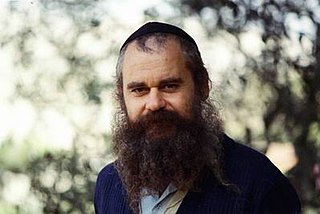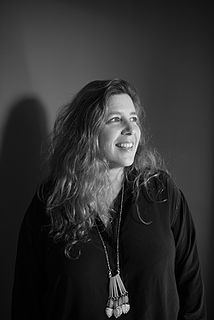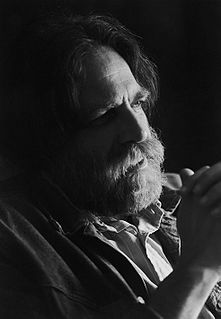Related Research Articles

Yocheved (Juki) Weinfeld is an artist, museum educator and developer of interactive exhibitions for children. She studied at the Tel Aviv University and the State Art Teacher's College (Israel); at the Hebrew University of Jerusalem and at the Michaelis School of Art at the University of Cape Town in South Africa).
Mordechai Avniel (1900–1989), variant name Mordecai Avniel, was an Israeli painter, sculptor and lawyer.

Shaul Shats is an Israeli painter, printmaker and illustrator, born in 1944 in Kibbutz Sarid, Israel. He studied at the Bezalel Academy of Art and Design, Jerusalem (1965–66), the Rietveld Academy, Amsterdam (1967), and the Freie Akademie, The Hague (1967). Shats taught at the Bezalel Academy from 1978–82. He won the Israel Museum Prize for Illustration (1990), the Jerusalem Prize (1992), the Ben Yitzhak Prize for Illustration of Israeli Children's Books (1992), and the Ish-Shalom Prize.
Avner Ben-Gal is an international painter and artist, working mainly from Tel Aviv, Israel. His works depict various intense, often neglected locations such as agricultural fields, prisons and smoky interiors, whereby theatrical scenes play out. The scenes present ghostly, rough hewn and often low life figures that are bare and hardened. The parallel between Ben-Gal's raw way of painting and his tough, ambiguous subject matter allows a unique intensity within his paintings.

Avraham Ofek was a multidisciplinary Israeli artist.

Pinchas Cohen Gan is an Israeli painter and mixed-media artist. He was awarded the Sandberg Prize (1979), the Culture and Sport Ministry's prize for his life's work (2005), and the Israel Prize in Art (2008).

Michael Gitlin is a contemporary sculptor.
Josephine Yaroshevich is a painter and pioneer in the field of Computer Art.

Joshua (Shuky) Borkovsky is an Israeli artist who lives and works in Jerusalem.

Khen Shish is an Israeli painter and installation artist.

Angelika Sher is a Lithuanian-born Israeli photographer.
The Artifact Gallery was an art gallery located in Tel Aviv, Israel, which featured local artists. It was established in 1986 by Sergio Edelsztein. It closed in 1996 and the archival material was later donated to the Information Center for Israeli Art at the Israel Museum, Jerusalem.

Mosh Kashi is an Israeli painter and artist. Senior Lecturer at the Bezalel Academy of Arts and Design in Jerusalem. In his works, Kashi raises issues that deals with painting in the contemporary era. Kashi's art has been exhibited in Israel and worldwide. He won the Young Artist Award (1994), Artistic Achievement Award (1997) and Ministry of Education (Israel) Culture and Sport Prize (2004).

David Adika is an Israeli photographer and educator.

Merav Shinn Ben-Alon (1965) is a multidisciplinary artist based in Tel Aviv. Her work has included work based on clothing.

Ayelet Carmi, is an Israeli painter and installation artist.

Michael Sgan-Cohen was an Israeli artist, art historian, curator and critic. His oeuvre touches different realms of the Israeli experience and the Hebrew language, displaying a strong connection to the Jewish Scriptures. His works were nurtured by his extensive knowledge of Art history, philosophy, Biblical Texts, Jewish thought and Mysticism, which in turn illuminated all these pursuits. His engagement with Judaism and the Bible as a secular scholar and his vast knowledge of modern and contemporary art contributed to the development of a distinctive approach which combined Jewish and Israeli symbols and images to create a multilayered and contemporary artistic language.
Jakob Eisenscher (1896–1980) was born in the Austro-Hungarian Empire. He was an Israeli artist.

Ruth Schloss was an Israeli painter and illustrator. Major themes in her work were Arabs, transition camps, children and women at eye-level. She expressed an egalitarian, socialist view via realism in her painting and drawing.
Israeli ceramics are ceramics designed either in Mandatory Palestine or Israel from the beginning of the 20th century. In additional to traditional pottery, in Israel there are artists whose works were created in an industrial environment. Until the late 1970s there existed in Israel a local tradition that emphasized the local values of nature as an expression of Zionist identity. From the 1980s artistic expressions that sought to undercut this tradition began to appear in the works of Israeli artists, who combined ceramics with other artistic media and with personal, critical agendas.
References
- ↑ Almog, Didi. Curriculum vitae. www.wetterlinggallery.com/sites/default/files/artists/files/biography_diti%2520almog%2 5202008.pdf
- ↑ Goldfine, Gil. “Picture Perfect: Up Front Edition.” Jerusalem Post [Jerusalem] 6 Oct 2006. 36. Print.
- ↑ Dekel, Tal. "From first-wave to third-wave feminist art in Israel: a quantum leap." Israel Studies, vol. 16, no. 1, 2011, p. 149+. General Reference Center GOLD.
- ↑ Rubin, Barry (2015). The Middle East: A Guide to Politics, Economics, Society and Culture. New York: Routledge. p. 446.
- ↑ Israel, Nico. "Diti Almog: Boesky & Callery." Artforum International, vol. 35, no. 2, 1996, p. 118. Expanded Academic ASAP.
- ↑ Goldfine, Gil. “Picture Perfect: Up Front Edition.” Jerusalem Post [Jerusalem]. 6 Oct 2006. 36. Print.
- ↑ Smith, Roberta. “ART REVIEW; Enter Youth, Quieter, and Subtler.” The New York Times [New York] 17 May 1996. The New York Times. Web. 27 Apr. 2017.
- ↑ Corn, Alfred. "Art in America." Rev. of Diti Almog at Boesky & Callery. Art in America Sept. 1996. Print.
- ↑ Schwabsky, Barry. "Tel Aviv: Diti Almog, Inga Gallery". Artforum, April 2008, 388.